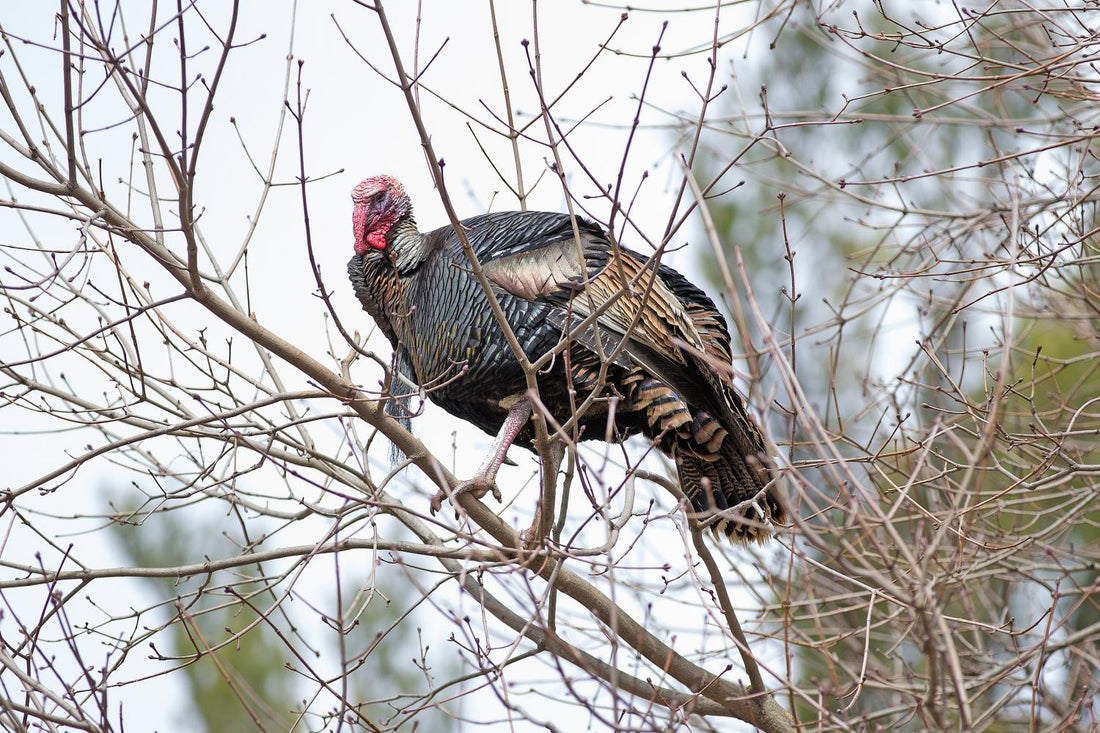-Theodore Roosevelt
I think, for most hunters, the initial draw to turkey hunting is that it’s so much more challenging than hunting other game species. In my opinion, it demands a lot more initial effort from the hunter, but that makes the payoff from a successful harvest so much more rewarding. You need to scout more strategically, learn the different calls they make and what they mean, learn how to call for yourself. Just selecting a call itself can be intimidating. There are so many different types to choose from and it is easy to get sucked down a rabbit hole when talking to the “experienced” caller about types of materials, glass, slate, types of wood, etc. Even gun selection, choke selection and shot load can get overwhelming. Then when you throw in the idea of taking a bird with a bow you have a whole other can of worms to deal with. Are you considering a body shot or a head shot because your broadhead selection might change drastically between the two. Also, you need to consider posture of the bird. The vitals are obviously a lot smaller than that of a deer and they change position drastically depending on the position the bird is standing. Knowing the anatomy of the bird is going to be key in having a successful harvest.
I’m going to try and stay above water here and just focus on scouting tips for a successful hunt. Keep in mind that I am a biologist and I get easily geeked out when it comes to certain aspects of wildlife biology, as I’m sure you’ll see as this progresses.
The two most important things to think about when considering a turkey’s location are that they need somewhere to eat and somewhere to sleep. So when scouting, consider good roost tree availability and food source for that time of year. A bird’s diet changes drastically with the seasons. In the fall and winter months, hard mast is a key part of their diet. However, as these things become less and less available, their home range might shift as they search for other food sources. And then all of a sudden green up hits and they can shift again. I like to compare this to crawfish season. My mother-in-law has a real nice slew behind her house that we like to crawfish in and I spend a significantly larger amount of time at their house in the summer than any other season. Anyways, I digress…
During the spring, a male turkey has only one thing on his mind, where the girls are at. Likewise, a female turkey has one thing on her mind, where can I lay this nest. Most studies in Louisiana indicate that females are actively searching upland areas to avoid flooded areas while still maximizing food source. Keep in mind that she is laying one egg a day and foraging between each lay so she probably doesn’t want to stay too far from the nest as it leaves them quite vulnerable, so proximity to both quality forage and good nest concealment is important.
Because these home ranges can shift so quickly, you can keep scouting to 2 or 3 weeks before the season opens. There’s really no sense in going out a month before the opening day because depending on the weather and habitat, the birds are probably going to move on you.
The next thing you want to look for is food plots, fields, logging roads, power lines, ridges, or any other kind of open habitat that birds can use to feed, gather, mate, fight, etc. Birds like to use these areas so scouting areas that include these features as well as proximity to good nesting areas will increase your chances of having some interaction with these birds.
Now that you have a lesson in biology let’s get to actual boots on the ground scouting. When you scout, do your best not to educate the birds before the season starts. Camo up as best you can, get there early, sit still, and be quiet. You’re only there to observe! In the afternoons, you can walk around looking for signs and tracks and scratching and feathers and poop. Some people get overly excited about these things. Keep in mind that these are only signs of where the birds have been, not necessarily where they are.
 Speaking of getting overly excited about turkey sign, did you know that males and females poop different because of their anatomy? Birds have a one-stop-shop when it comes to reproduction and excrement disposal. Because a female’s internal “situation” needs to wrap around an egg, their poops have a chance to curl up like the emoji before exiting. Males have a lot less wiggle room up there so their poop comes out long and skinny and sometimes curls at the end making a “J” shape. How exciting, right?
Speaking of getting overly excited about turkey sign, did you know that males and females poop different because of their anatomy? Birds have a one-stop-shop when it comes to reproduction and excrement disposal. Because a female’s internal “situation” needs to wrap around an egg, their poops have a chance to curl up like the emoji before exiting. Males have a lot less wiggle room up there so their poop comes out long and skinny and sometimes curls at the end making a “J” shape. How exciting, right?My point is that you can get really involved in scouting. There’s a lot to take in and sometimes it’s really hard to tell the difference between turkey scratching or a really ambitious armadillo. My biggest suggestion is to get out there and put the time in. There is no substitution for experience, and with a little bit of knowledge about preferred seasonal habitat selection and a willingness to put the time in, you are more likely to increase your changes of interacting with this incredible bird.
-Betsy Dutoit LABH Contributor/ NWTF Regional Biologist

